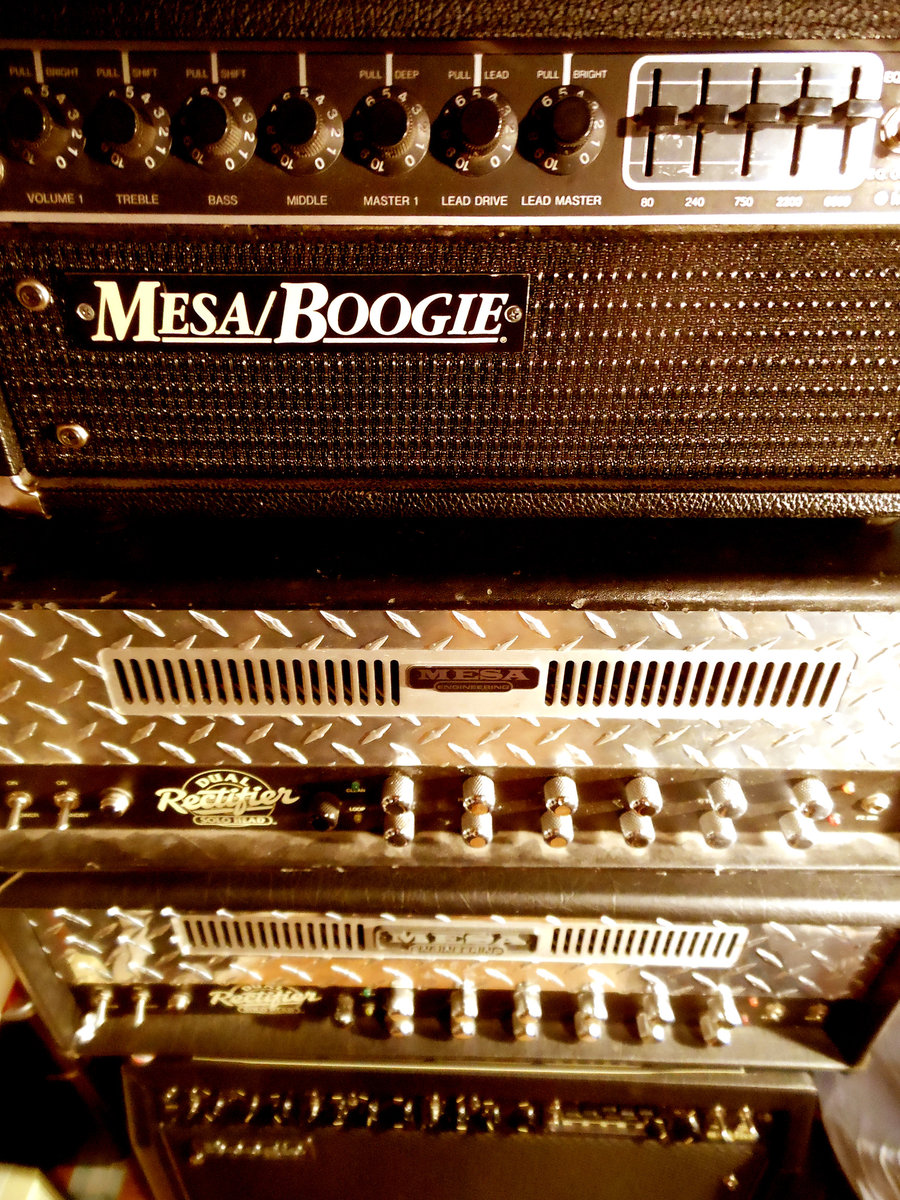LesPaul70
Well-known member
- Joined
- Apr 5, 2010
- Messages
- 432
- Reaction score
- 2
Not exactly a "new" amp since it is more than 20 years old but anyway...
Being the lazy (make that "busy" 8) ) guy I am, instead of modding my G, I went and got me an original C, serial R01xx.
Now the problem is...I was seeking to sell my G - but unfortunately (fortunately?), the C is so different from the G that I really need them both. They are far more different from each other than any two Mark amps I have ever owned. The C is brighter, more aggressive...but more than anything else, ultra-tight. It is so tight and focused, it makes my Marks sound like loose mud, relatively speaking. It's like the polar opposite of my G.
It was an interesting shootout session, by the way, when I bought the C. I took my G with me to compare it with the C, and seller also had an F Racktifier. I played all 3, and it was fascinating to hear how each revision had a very distinct voice.
Below, two amp family photos, from the oldest to the youngest.


Being the lazy (make that "busy" 8) ) guy I am, instead of modding my G, I went and got me an original C, serial R01xx.
Now the problem is...I was seeking to sell my G - but unfortunately (fortunately?), the C is so different from the G that I really need them both. They are far more different from each other than any two Mark amps I have ever owned. The C is brighter, more aggressive...but more than anything else, ultra-tight. It is so tight and focused, it makes my Marks sound like loose mud, relatively speaking. It's like the polar opposite of my G.
It was an interesting shootout session, by the way, when I bought the C. I took my G with me to compare it with the C, and seller also had an F Racktifier. I played all 3, and it was fascinating to hear how each revision had a very distinct voice.
Below, two amp family photos, from the oldest to the youngest.












